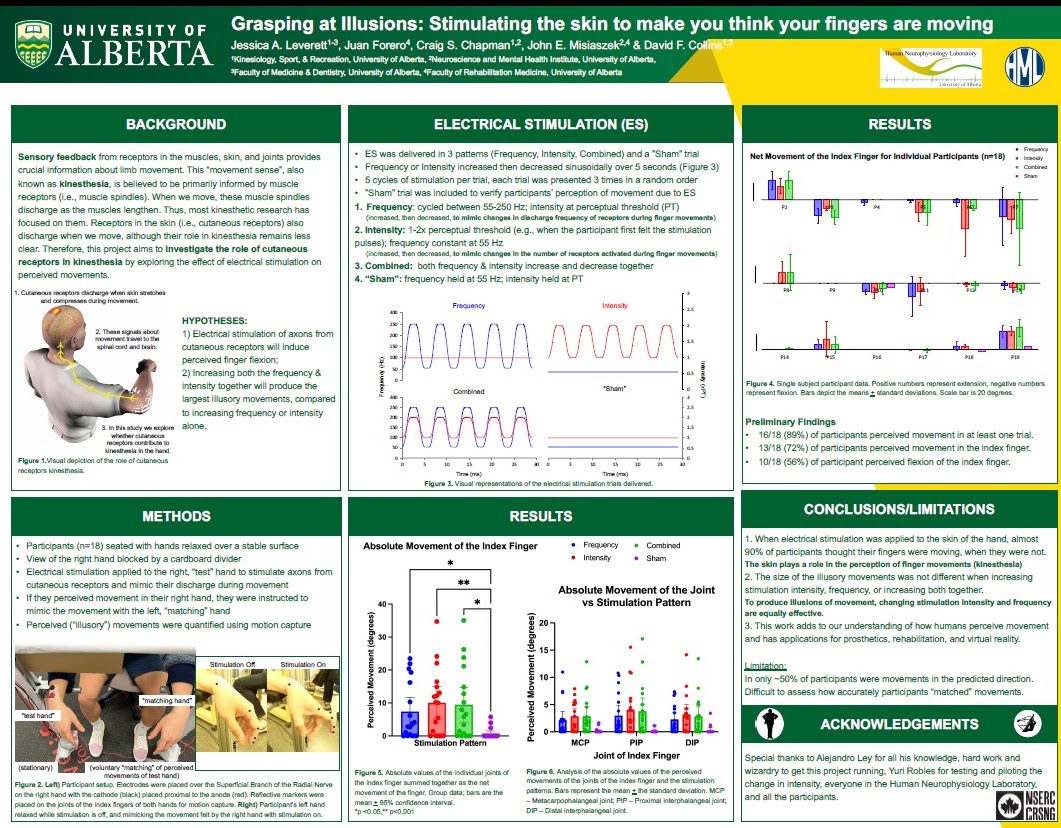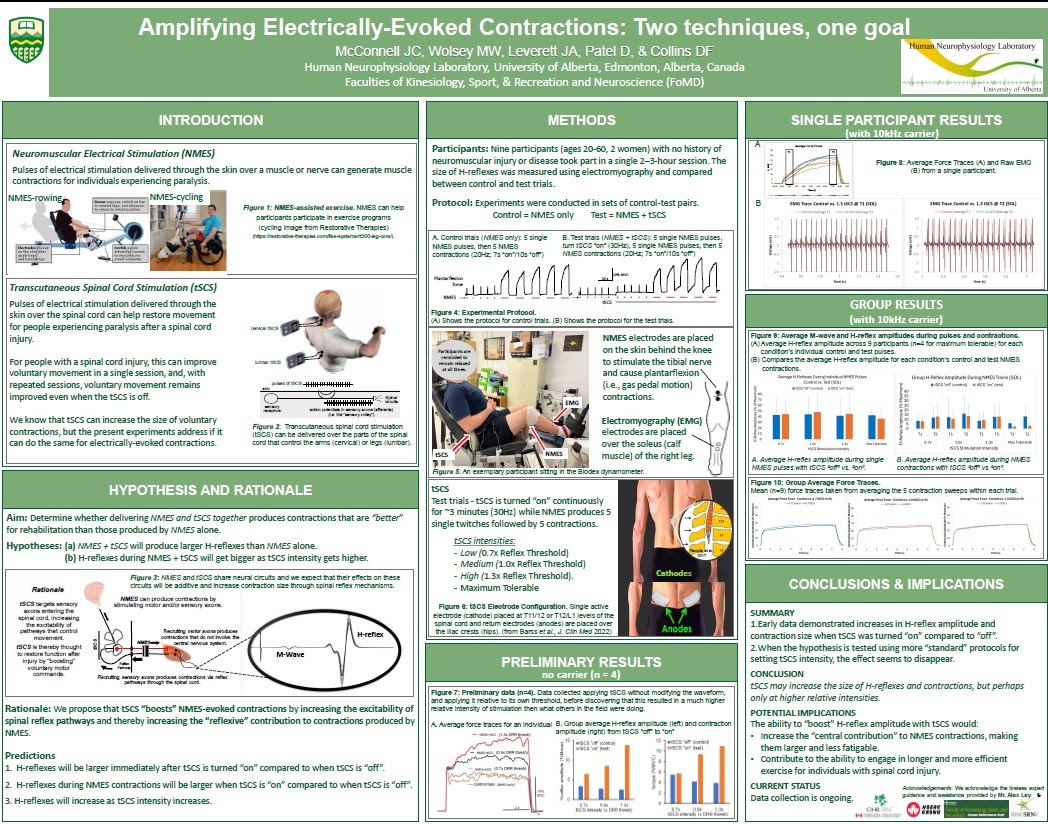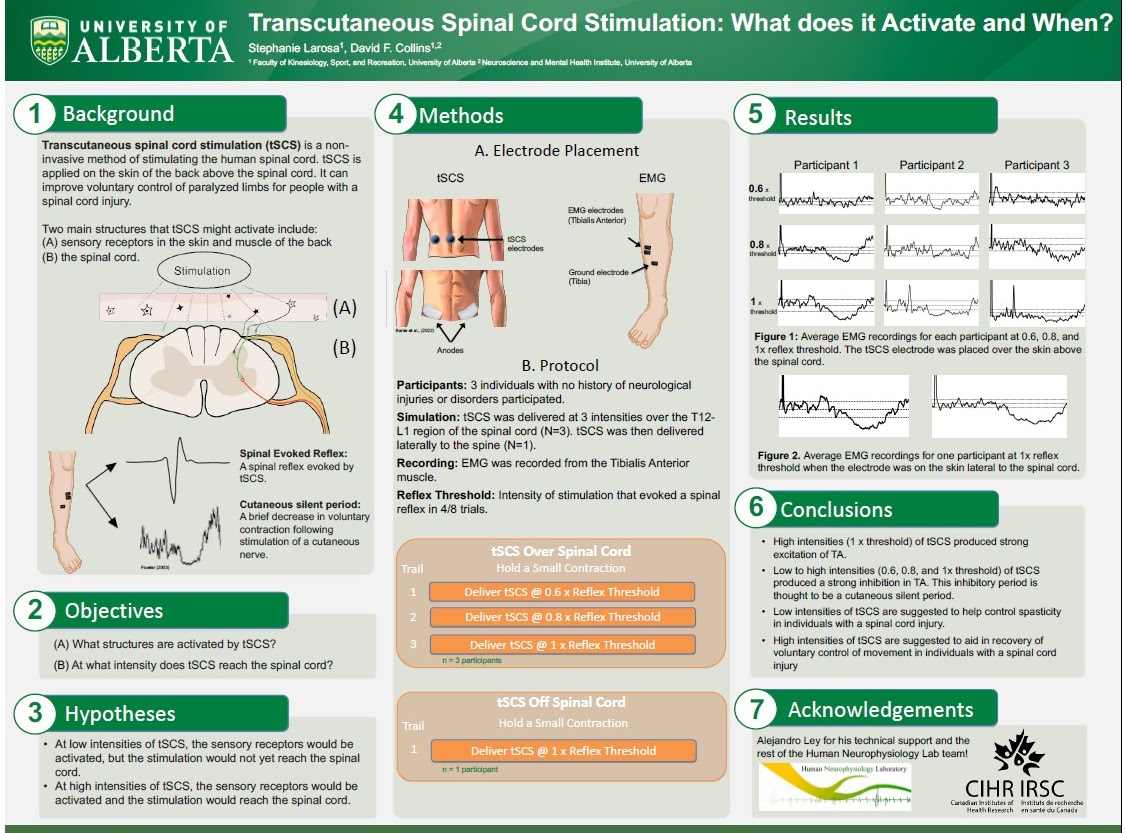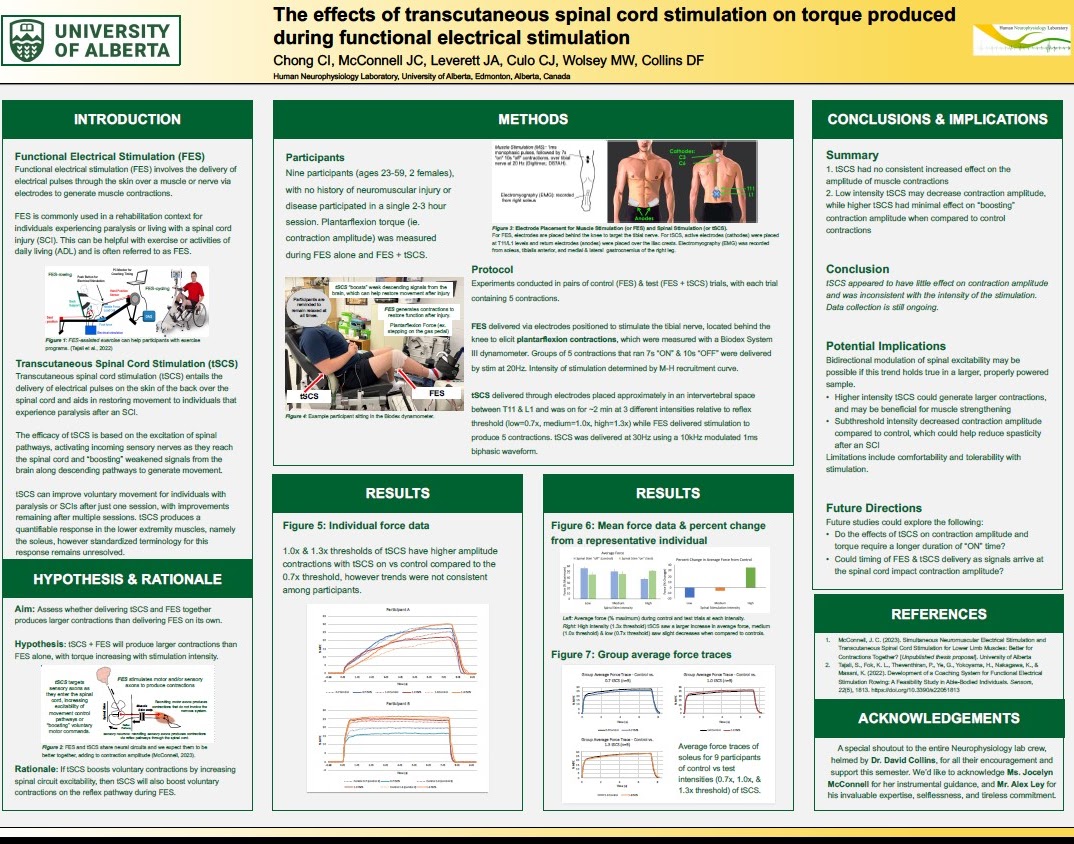Research Focus: Neural Control of Human Movement
The Neurophysiology Laboratory focusses on identifying how the nervous system controls human movement. Within this broad area of investigation, research is divided into two main categories:
- How sensory feedback contributes to movement control, including
- The role of reflexes in neural control of movements such as walking and grasping
- The importance of feedback from sensory receptors in the skin
- Using electrical stimulation to generate contractions of human muscle. This work has relevance both for understanding how the nervous system controls movement but also for using electrical stimulation for rehabilitation for persons with movement disorders.
How intrinsic properties of neurons within the spinal cord play a role in helping to shape motor output, including
- The extent to which such intrinsic neuronal properties contribute to normal voluntary contractions and "abnormal" contractions such as those during muscle cramps, spasms and spasticity.
- Whether activating these spinal neurons may be useful clinically for functional electrical stimulation (FES) of muscle to help restore movement and overcome the muscle wasting that results from disuse.
- Current findings show that:
- when electrical stimulation is applied over human muscle, large contractions develop which are not due to the direct activation of the muscle beneath the stimulating electrodes.
- They result from the “reflex” activation of neurons within the spinal cord, probably involving plateau potentials in the spinal neurons.
- This suggests that human spinal neurons may play a very active role in helping to shape motor output.
Other Research
Nerve conduction velocity in an elephant is measured. See story.
Electrically stimulating reflex pathways in the spinal cord holds new hope in preventing muscle atrophy. See story.
Recently Presented Posters
| ReCON XI | Grasping at illusions: Stimulating the skin to make you think your fingers are moving. |  |
| ReCON XI | Amplifying Electrically-Evoked Contractions: Two techniques, one goal. |  |
| ReCON XI | Transcutaneous Spinal Cord Stimulation: What does it activate and when? |  |
| ReCON XI | The effects of transcutaneous spinal cord stimulation on torque produced during functional electrical stimulation. |  |
